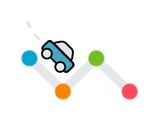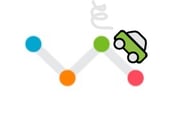Maximizing Learning Agility: Avoiding the Pitfalls of Personal Preferences
Posted on October 23, 2021

A tale of two employees: She was the best of employees. He was…well, let’s just say he didn’t last.
I once hired two managers. We’ll call them Ahn and Cam. Both came from hard-driving organizations where employees had “sharp elbows.” Both attended the same on-boarding training about our company culture, which focused on politeness, empathy, and respect.
Right away, Ahn started demonstrating these new principles in her interactions with others. Cam, on the other hand, learned the principles, but never gave up his aggressive, winner-take-all attitude.
Who do you think got promoted?

Learning about the culture was essential. But learning was only half the equation. The other half required learning agility. Ahn, who got the promotion, first learned, then internalized and applied her learning under new conditions. That's learning agility.
Learning was only half the equation. The other half required learning agility.
Learning agility is the ability and willingness to learn from experience, and subsequently apply that learning to perform successfully under new or first-time conditions. (Swisher, 2014)
Just like ideas aren’t the only thing you need for innovation, learning isn’t the only thing you need for growth and development. Learning agility is the key to getting the most out of any training, especially FourSight training.
When most people learn their FourSight preferences for clarifying, ideating, developing and implementing, they get excited. Their high preferences reflect their favorite parts of the problem-solving process. Their low preferences show the parts they avoid. They relate well to their profile.
If they stop there, at simply learning the profile labels, they risk misusing FourSight by letting thinking preferences drive their thinking: “I’m awesome because I’m a [insert your profile here]” or “Oh, no! You’re one of those annoying [insert someone else’s profile here].”
"Oh, no! You're one of those annoying..."
The power of FourSight is to learn about ourselves, others, and then—here’s the critical part—shift how we operate. That requires learning agility.
According to research from Korn Ferry, being highly learning agile is rare. They found only 15% of the global workforce is highly learning agile. They also found that learning agility is the single best predictor of leadership success—more than general intelligence, drive, motivation, emotional intelligence, or any personality traits alone.
So what exactly does learning agility look like with FourSight?

First, it’s acknowledging that your FourSight profile is a pointer, not an identity.
Your profile helps you figure out where you need to invest time and energy in changing your behavior. It helps you recognize the problem-solving stages you prefer to skip and the people you prefer to avoid. Agile learners don’t argue for their limitations: “Hey man, I’m an Ideator. I don’t do Implementation.” Nor do they use FourSight as an excuse to accuse others (i.e., blaming Developers for things never getting implemented, complaining about Ideators never landing on one idea, or telling Clarifiers to stop asking so many darned questions).

Agile learners understand that, while low preferences are a fact, low abilities are a choice.
When Jacyntha, a newly certified FourSight facilitator debriefed FourSight with Kelly, a PhD in organizational psychology, Jacyntha was surprised at how accomplished Kelly was, even in her areas of low preference. Kelly replied, “Well of course I do the things I prefer not to. I’m an adult, and I’ve learned what’s necessary to achieve goals.” Note: Kelly is a great example of Learning Agility.

Agile learners recognize that people with different preferences need different things.
Rather than feel irritated by the inconvenience, agile learners work to meet those needs. Gerard Puccio, PhD, originator of the FourSight theory likes to point out: The “Golden Rule” is to treat others the way you want to be treated, but the “Platinum Rule” is to treat others the way they want to be treated. In jewelry stores and in leadership, platinum is more valuable than gold.

Under stress, agile learners don’t succumb to their preferences and expect others to accommodate.
Neither do leaders. Once you acknowledge your role as a leader, mentor, teacher, role model, or facilitator, you give up the right to be comfortable. At this level, you know you can’t use your thinking preferences to excuse non-helpful behavior.
The moral of the tale of two employees is that just learning isn’t enough. Instead of learning FourSight as a way to pin labels on people, learn your preferences and others’ preferences, then shift your actions so you can be more effective together.
Jonathan is a partner at Pilgrimage Professional Development, a senior faculty member at the Center for Creative Leadership, and a certified FourSight facilitator. He works with organizations to develop leadership and innovation solutions necessary for growth.
Ready to learn more about FourSight?
Contact us today to learn more about our offer and how FourSight can help your teams work better together.
If you'd like to learn more about FourSight before scheduling a call, click below to learn about our platform and the science behind FourSight.
